
Physiology of
The Blood
By prof. Israa f. jaffar

Learning objectives
•
Identify the functions of blood
•
Describe the structure of whole blood:
–
plasma and formed elements
•
To describe the classes of plasma proteins
•
To describe RBC shape, structure, count,
function, and oxygen carrying capacity.

Components of Blood
Blood is a mixture of cellular components
suspended in plasma:
1. Erythrocytes (RBCs)
2. Leukocytes (WBCs)
Total Blood Volume: 8 % of body weight
2.75 / 5.5 liters of blood is plasma
(remaining is the cellular portion)
3. Thrombocytes (platelets)
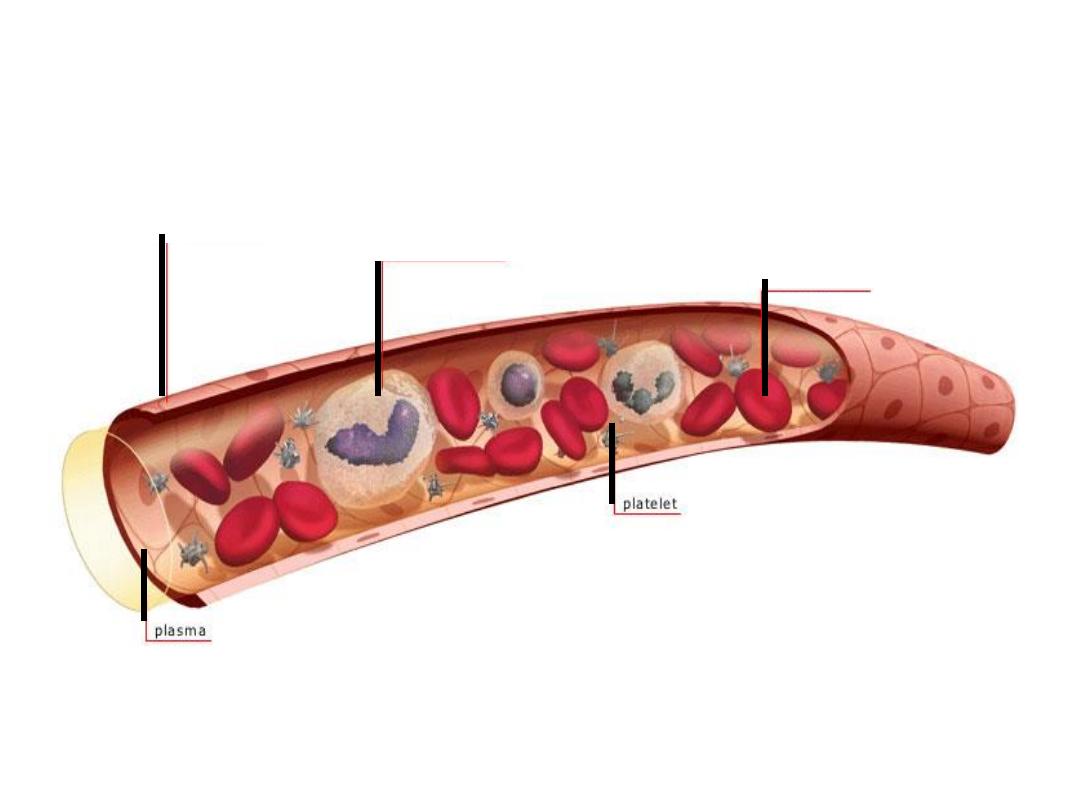
Blood vessel
Red blood cell
platelet
Plasma
White blood cell

3 General Characteristics
of Blood
•
38°C (100.4°F) is normal temperature
•
High viscosity
•
Slightly alkaline pH (7.35–7.45)
*Blood volume (liters) = 7% of body weight
(kilograms):
–
adult male: 5 to 6 liters
–
adult female: 4 to 5 liters
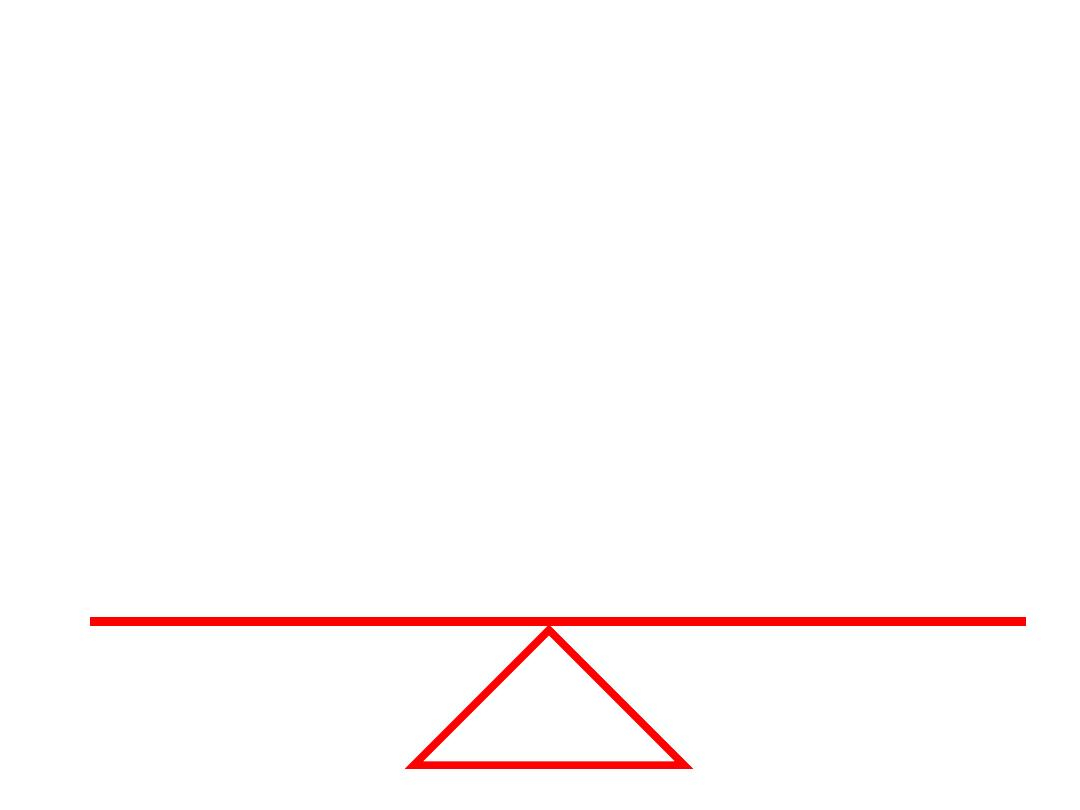
Functions of Blood
Transports:
Nutrients
O
2
&
CO
2
Waste Products
Hormones
Electrolytes
Defense:
Foreign organisms
Injury/infection
Clotting process
Body temperature
Maintains
Homeostasis
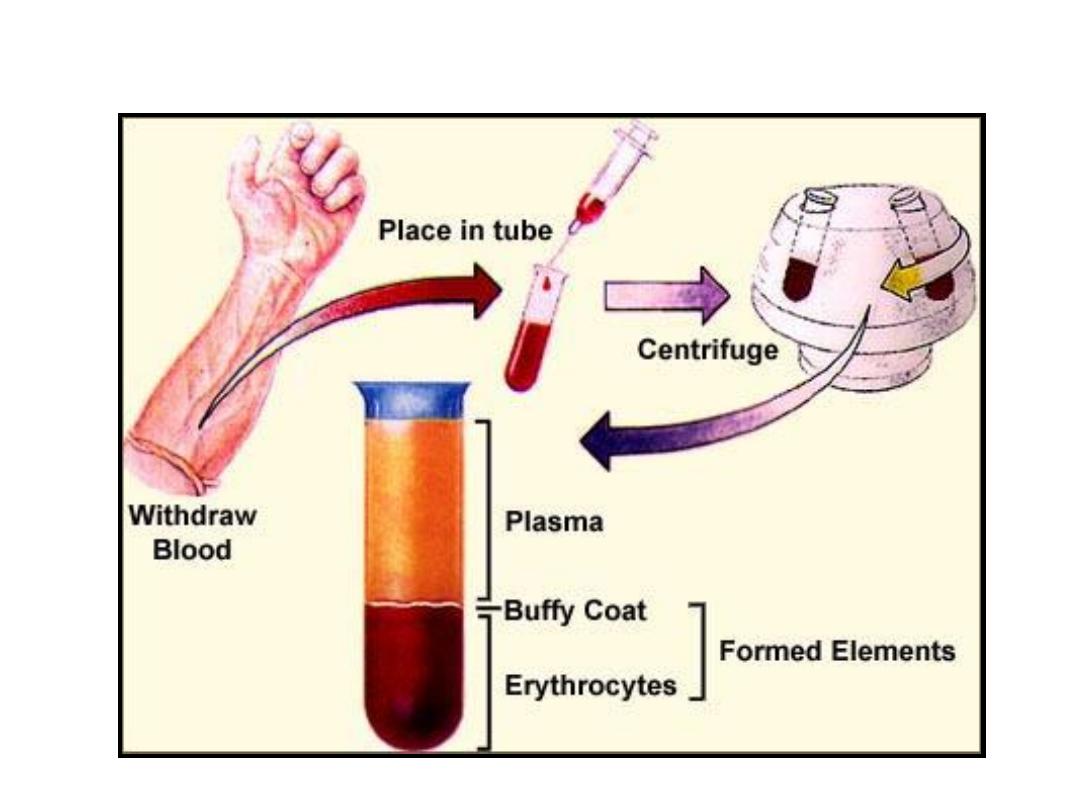
Centrifuged Blood Sample

Separation of Components
Plasma = Less Dense
Hematocrit
“Packed Cells”
More Dense
Platelets / WBC’s

Plasma
•
Is similar to, and exchanges fluids with,
interstitial fluid
•
Is matrix of formed elements
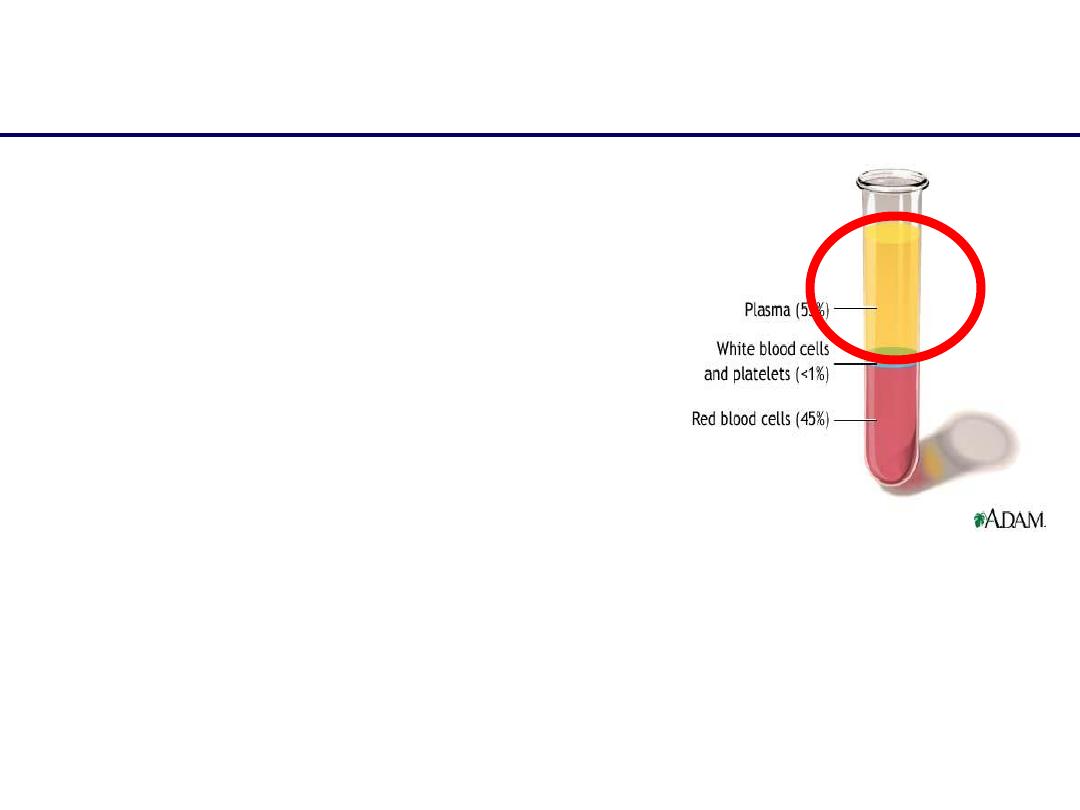
Components of Plasma
Blood plasma Consists of:
• Water 90%
• Plasma Proteins 6-8 %
• Electrolytes (
Na
+
& Cl
-
)
1%
Other components:
• Nutrients (e.g.
Glucose and amino acids)
• Hormones (
e.g. Cortisol, thyroxine)
• Wastes (e.g. Urea)
• Blood gases (e.g. CO
2
, O
2
)
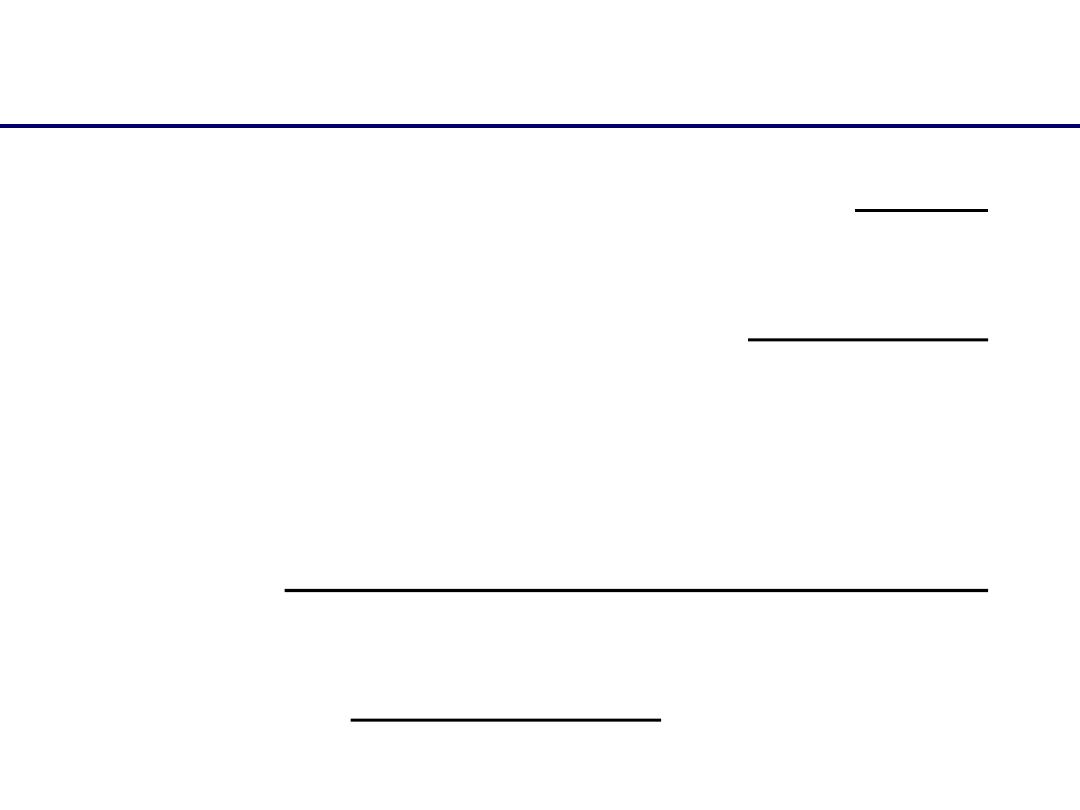
Functions of Plasma
Water:
.
1
* Transport medium; carries heat
Electrolytes:
.
2
* Membrane excitability
* Osmotic distribution of fluid b/t ECF & ICF
* Buffering of pH changes
Nutrients, wastes, gases, hormones:
.
3
–
No function – just being transported
(See Next Slide)
Plasma Proteins
.
4

Plasma Proteins
)
fibrinogen
,
globulins
,
albumins
: (
Plasma Proteins
1. Maintaining colloid osmotic balance (
albumins)
2. Buffering pH changes
3. Transport of materials through blood (such as water
insoluble hormones)
4. Antibodies (e.g. gamma
globulins
, immunoglobulins)
5. Clotting factors (e.g.
fibrinogen)
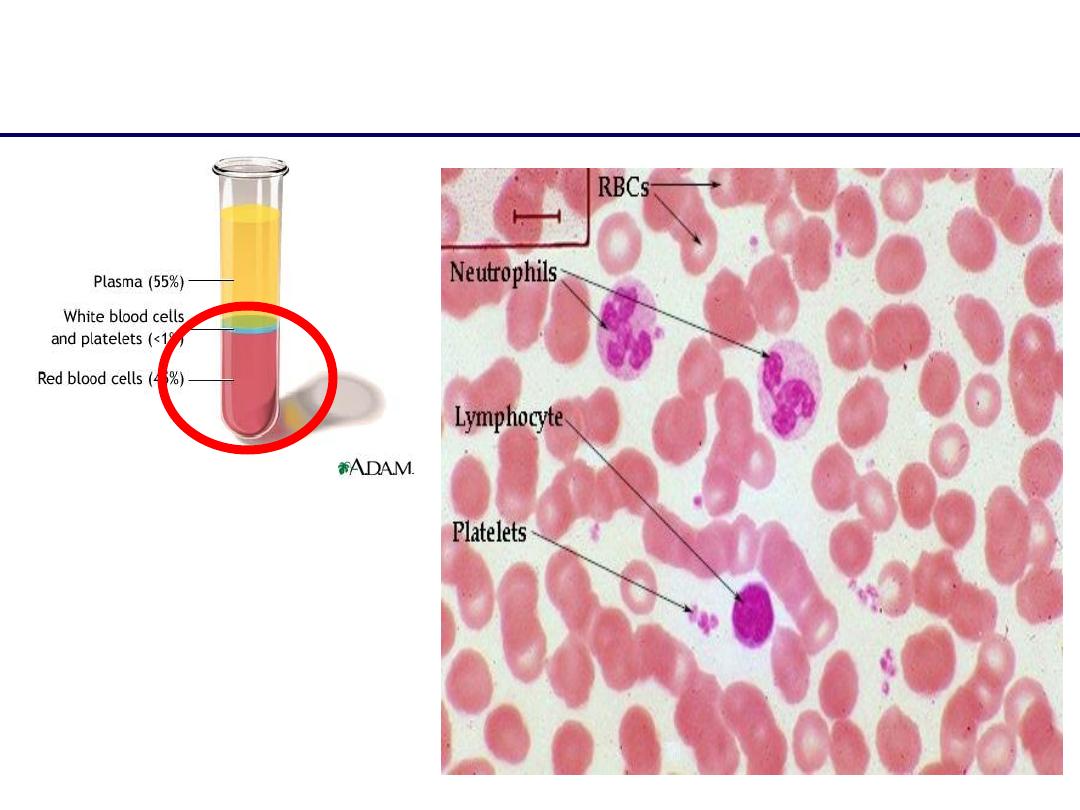
3 Cellular Elements of Blood
1. Red Blood Cells
2. White Blood Cells
3. Platelets

Hematocrit “Packed Cells”
•
RBCs heaviest – packed at bottom after
centrifugation
•
Average 45% for men / 42 % for women
•
Important clinical diagnostic marker
•
Anemia = Low percentage of erythrocytes
•
Hematocrit – mostly RBCs b/c they are the most
abundant type of blood cell (99%)
•
Plasma = rest of blood not occupied by RBCs
(55% of whole blood for males/ 58% for females)

1. RBC’S (Erythrocytes)
•
Shape - a biconcave disc with large surface area
•
Can change shape
•
No Nucleus / organelles
•
Contains hemoglobin
Primary Function = Transport oxygen from the
lungs to the cells of the body & assist with CO
2
removal
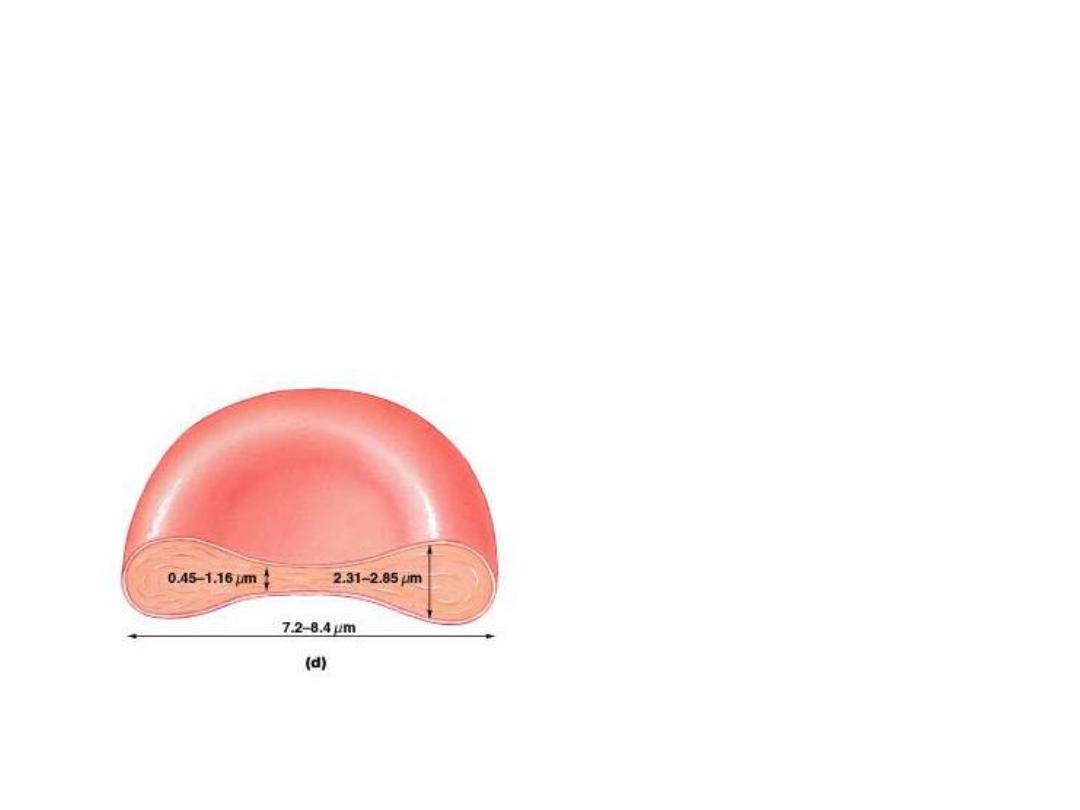
RBC Structure
•
Small and highly specialized disc
•
Thin in middle and thicker at edge
Figure 19–2d
Lifespan of
RBCs
Lack nuclei,
mitochondria,
and ribosomes
Live about 120
days

Importance of RBC
Shape and Size
.1
High surface-to-volume ratio:
–
quickly absorbs and releases oxygen
.2
Discs form stacks:
–
smoothes flow through narrow blood vessels
.3
Discs bend and flex entering small capillaries:
–
7.8 µm RBC passes through 4 µm capillary
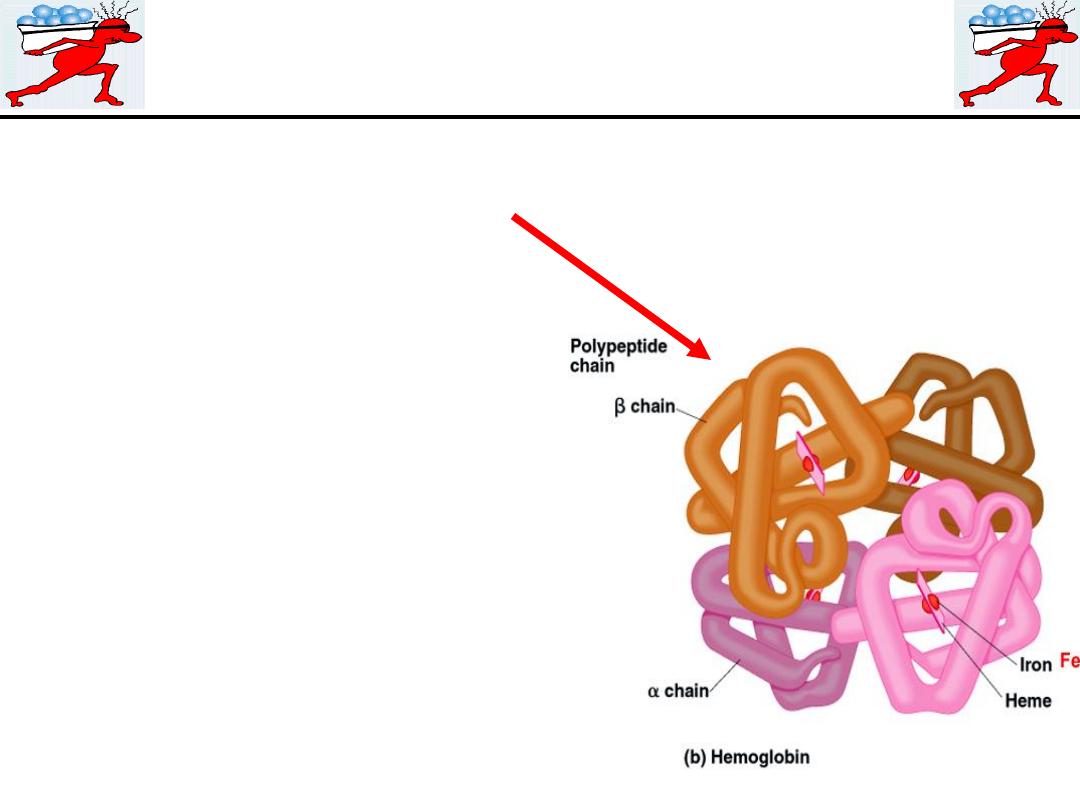
Mechanism of Transport
* 4 Heme Molecules =
* 4 Oxygen Molecules
*Oxygenated Hemoglobin
Bright Red (systemic)
*Deoxygenated Hemoglobin
Blue (venous circulation)
HEMOGLOBIN
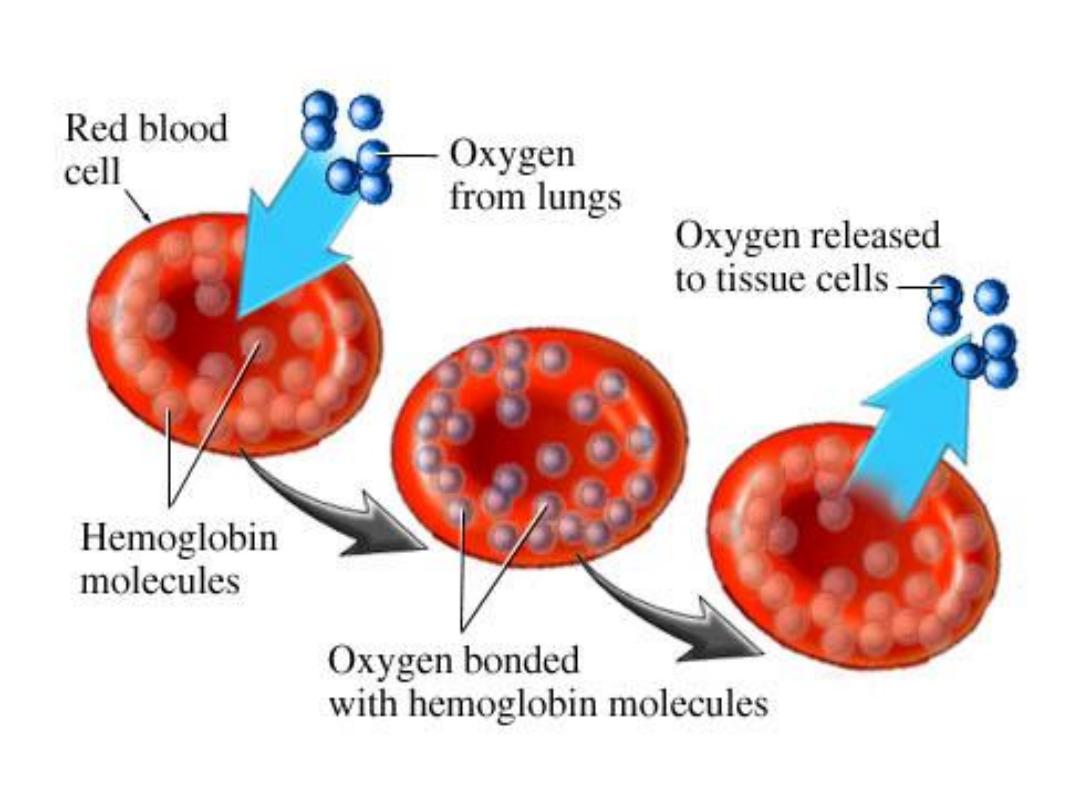
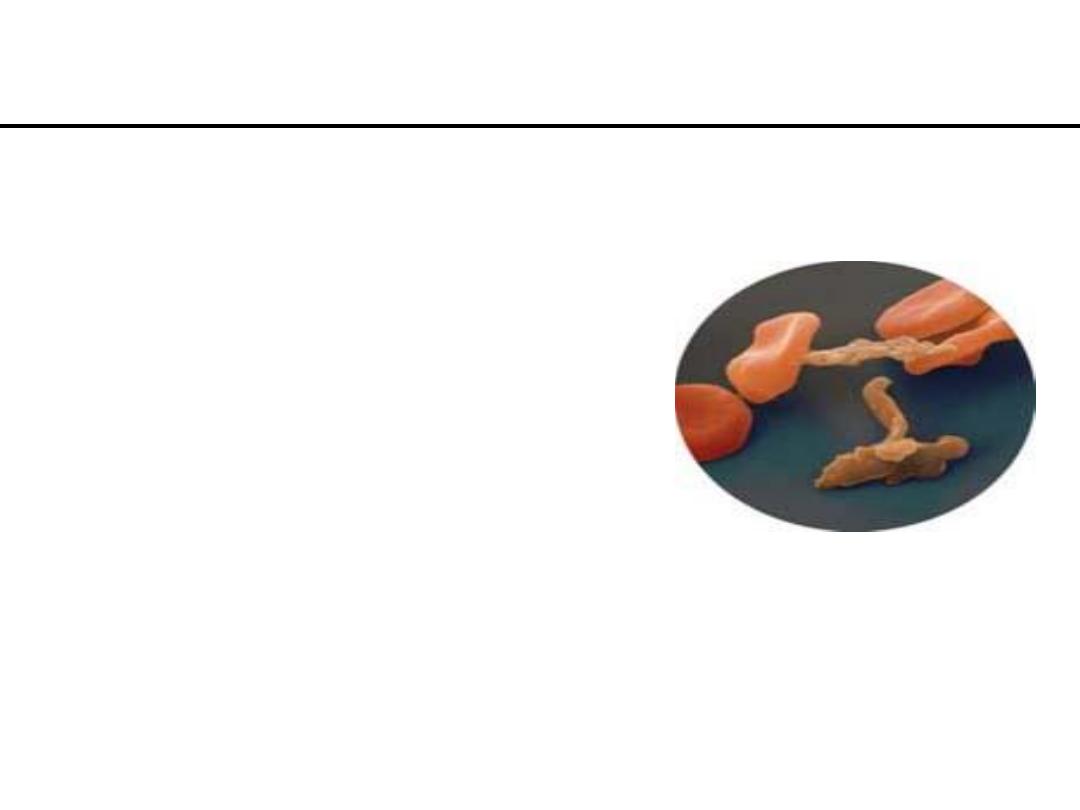
RBC’S (Erythrocytes) cont…
•
Lack intracellular organelles necessary for
cellular repair, growth, division
•
Short Life Span (~120 days)
–
Aged RBC
–
Fragile - prone to rupture
•
Ruptured RBC’s are destroyed in spleen
–
Phagocytic WBC’s “clear the debris”

Too few, Too many
•
Anemia – low hematocrit (below-normal
oxygen-carrying capacity of the blood)
–
Nutritional, pernicious, aplastic, renal,
hemorrhagic, hemolytic
•
Polycythemia- abnormally high hematocrit
(too many RBCs in circulation)
–
Primary, secondary
